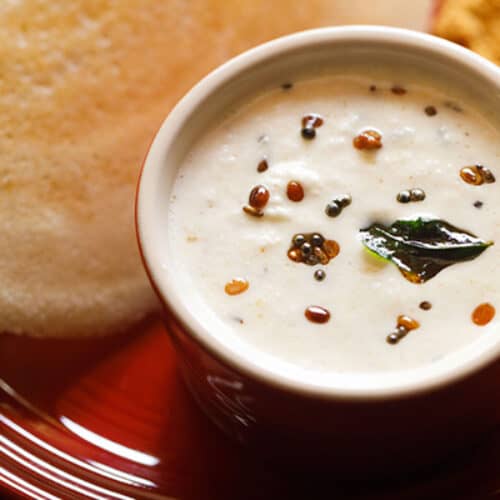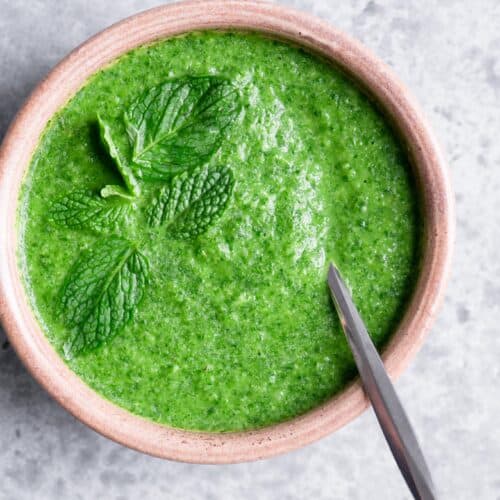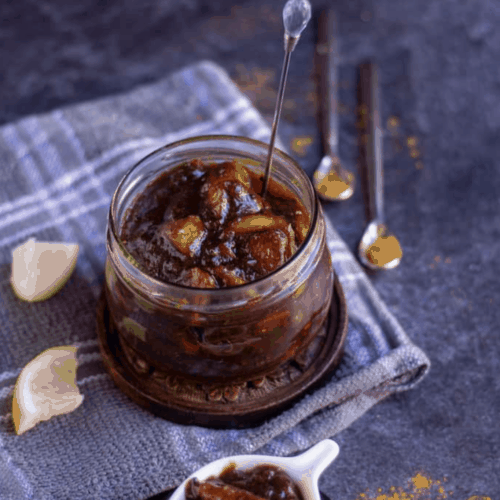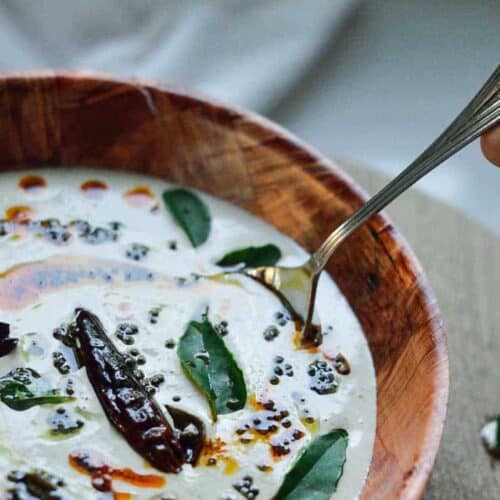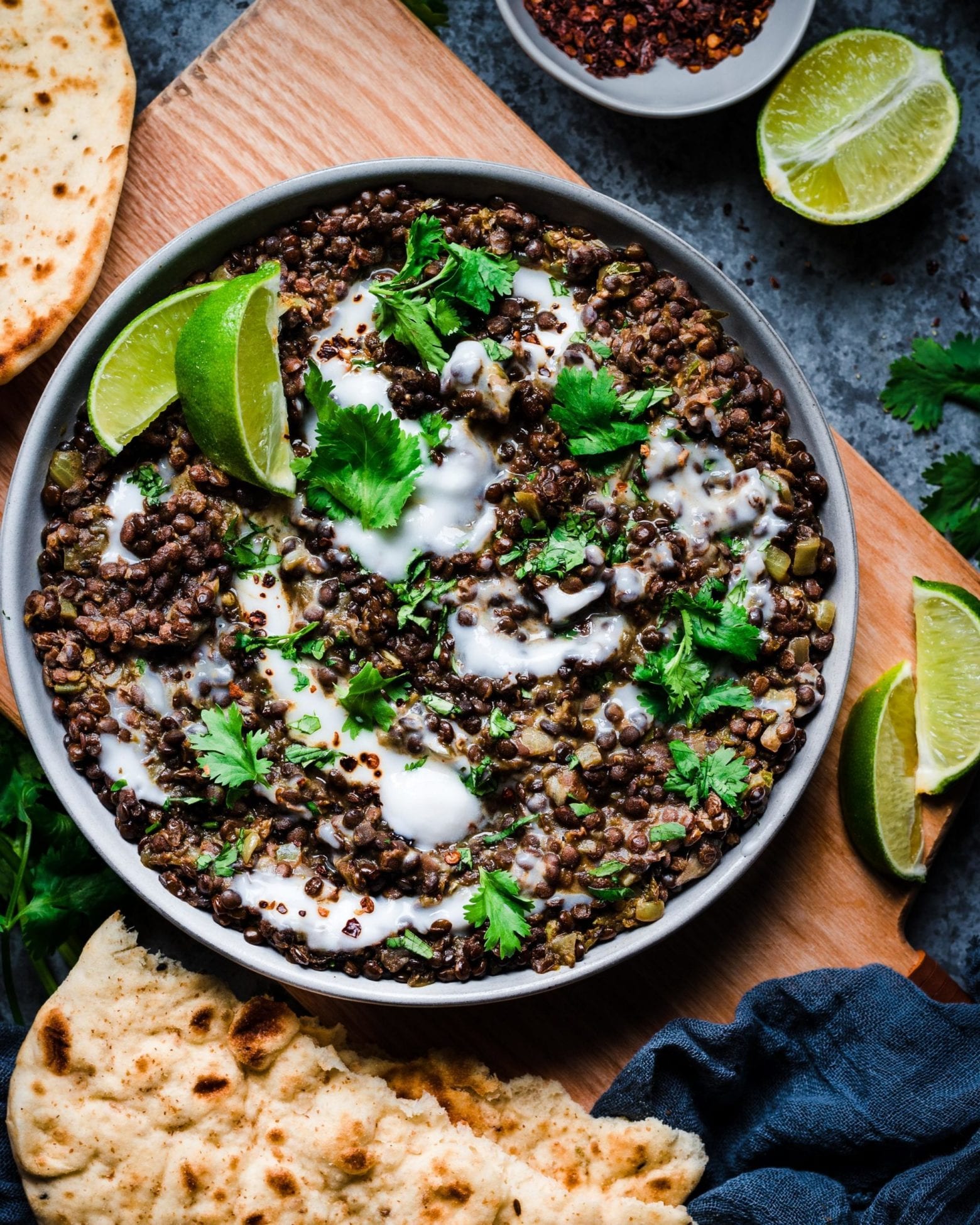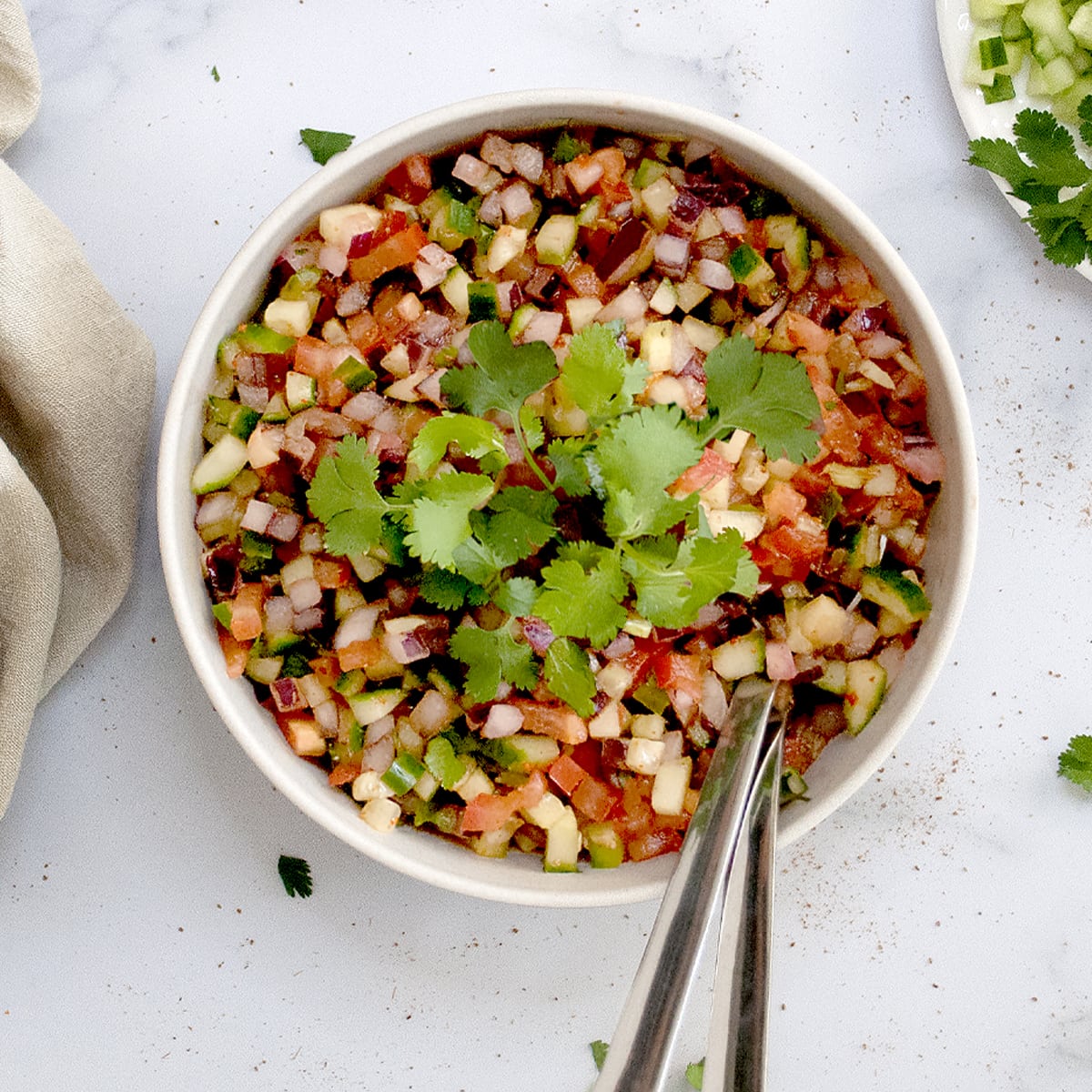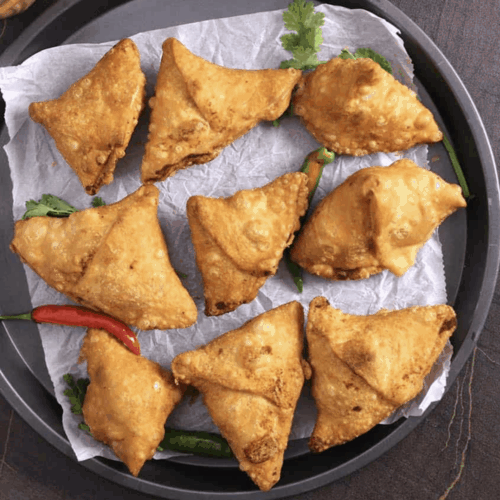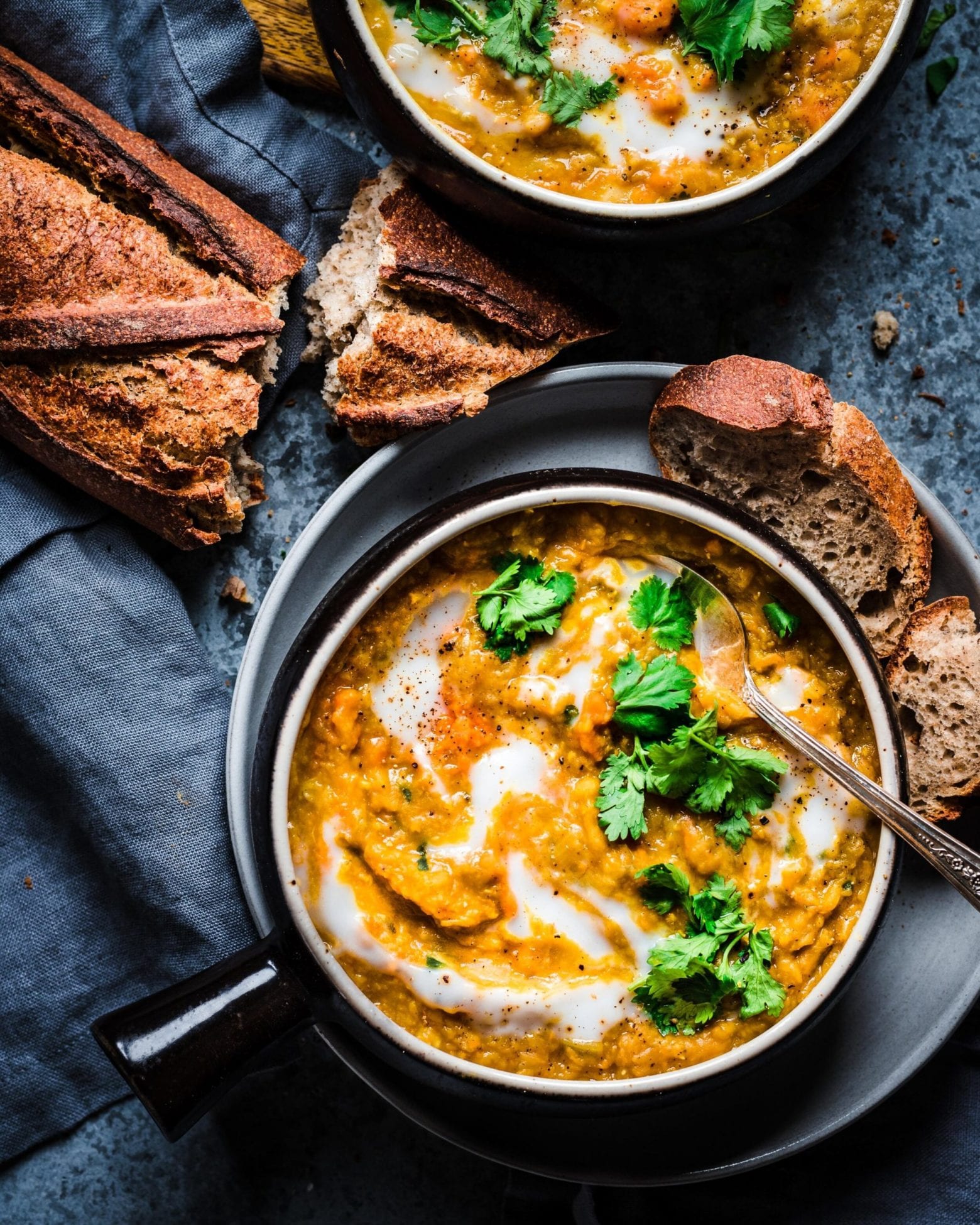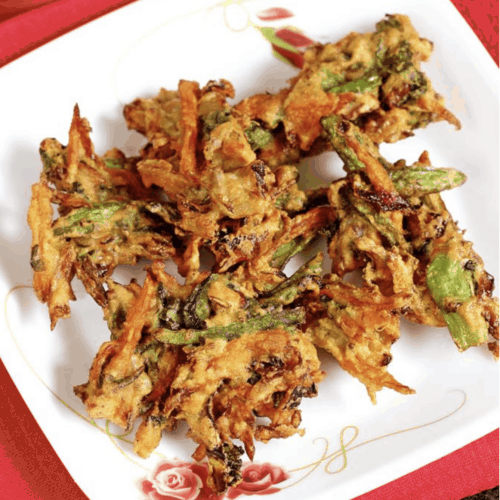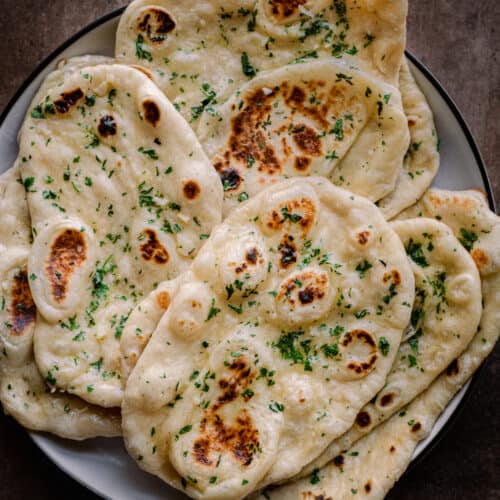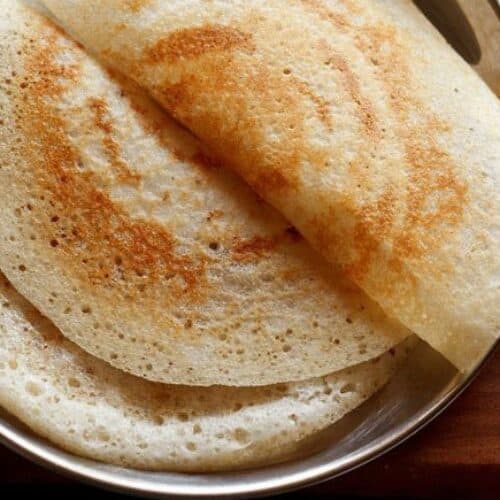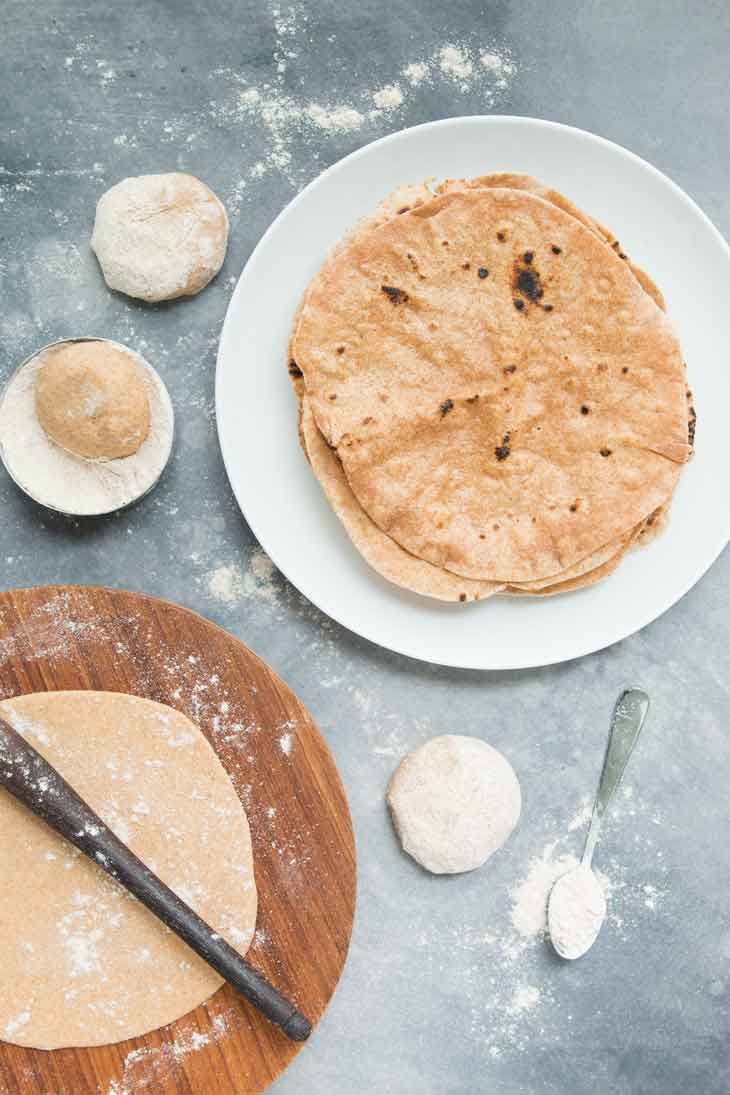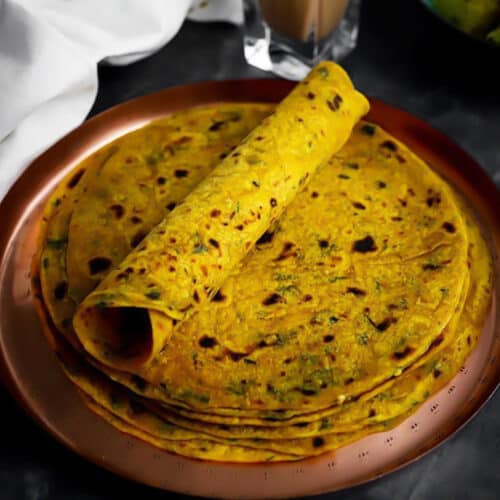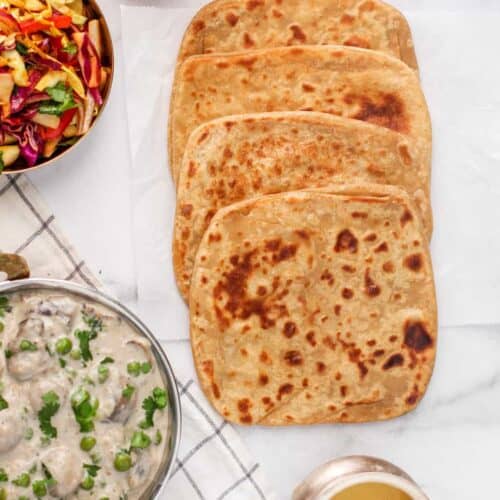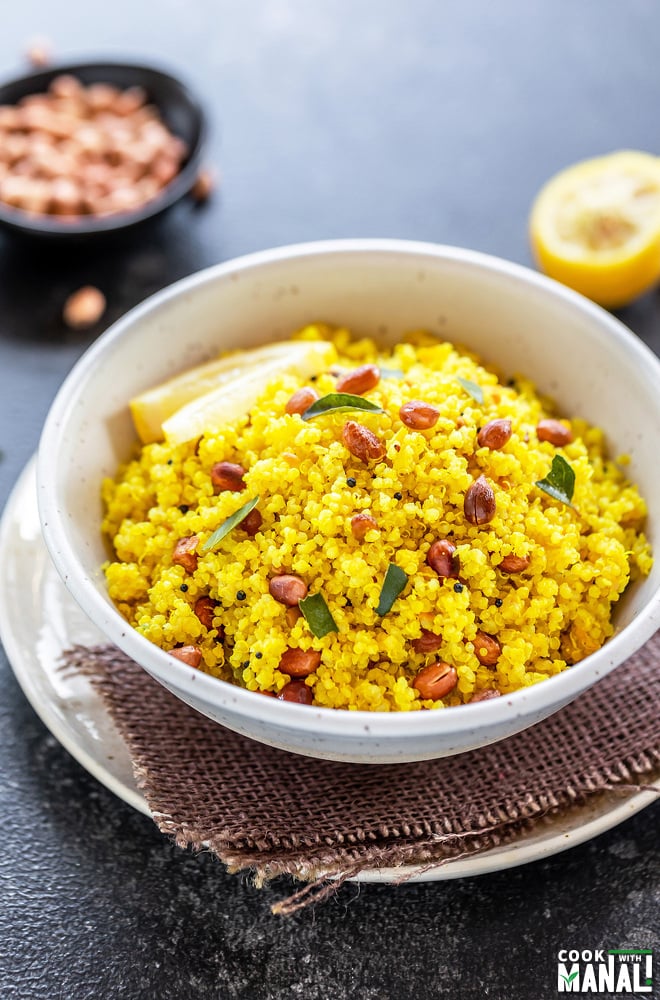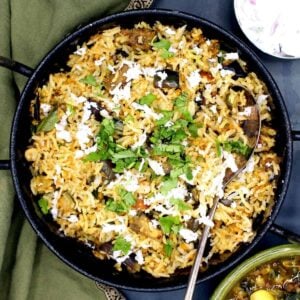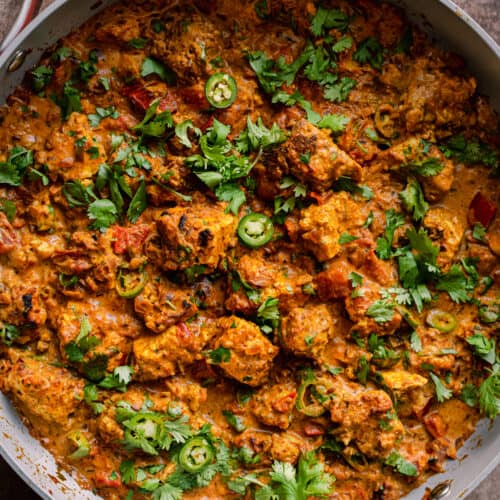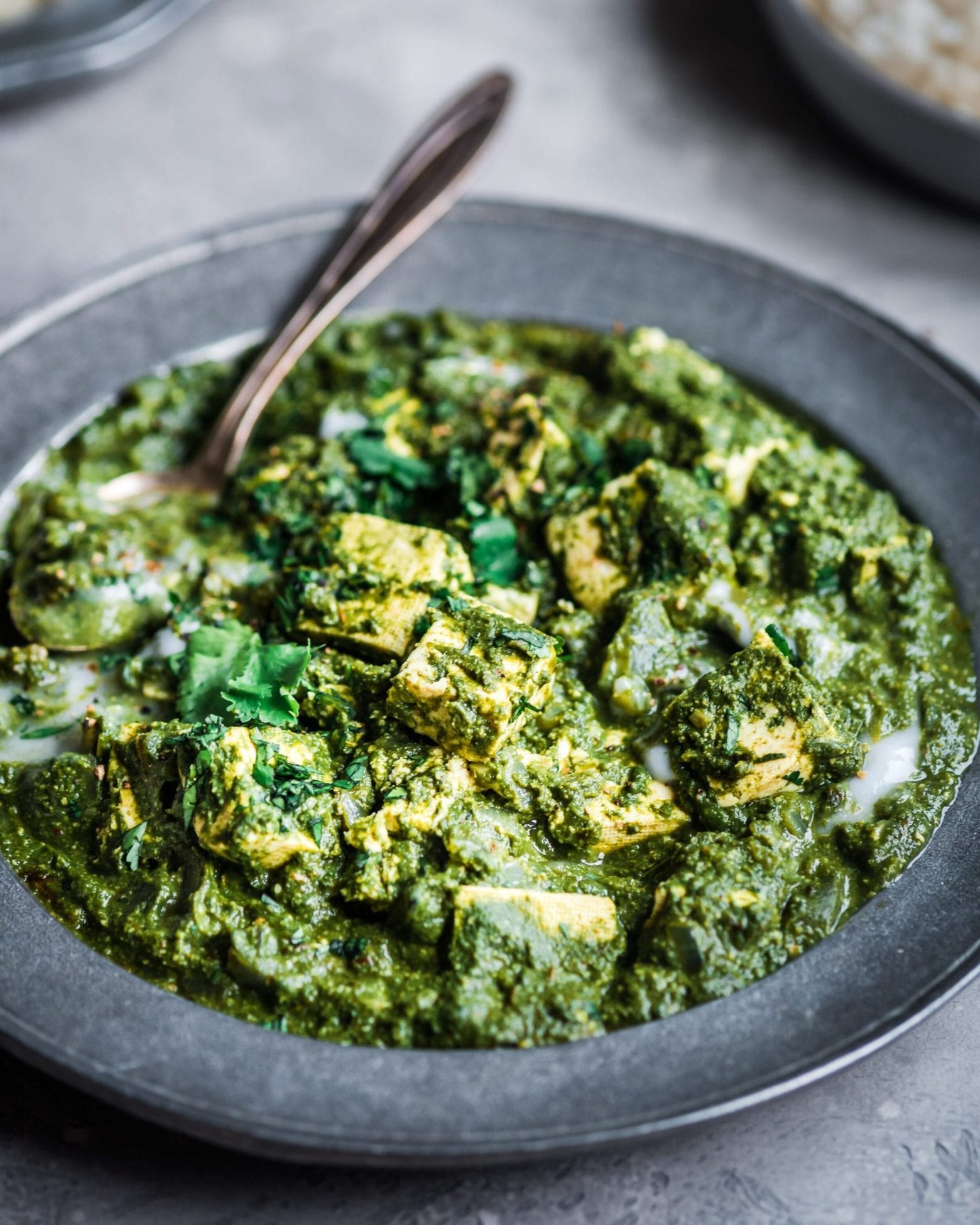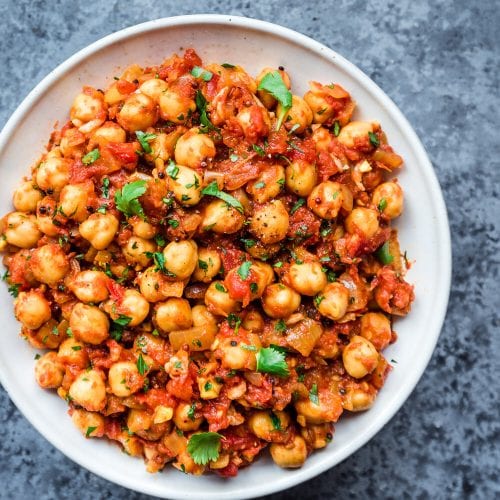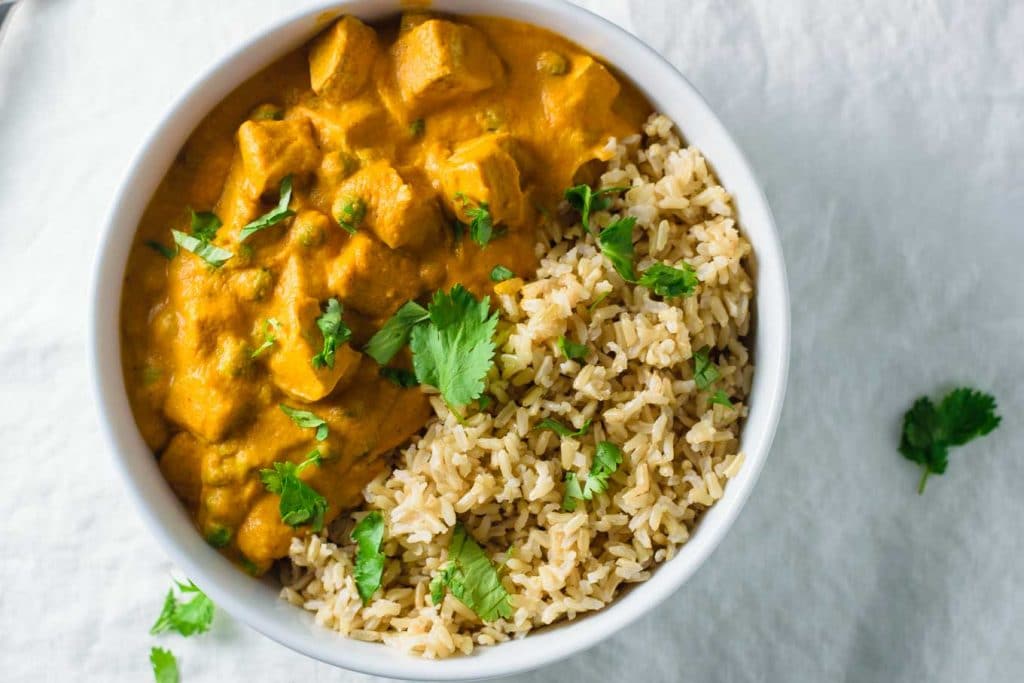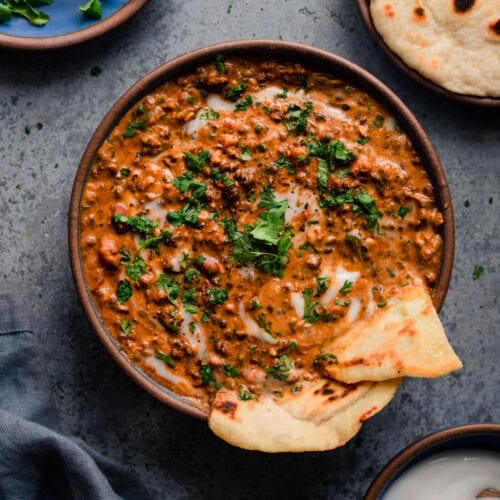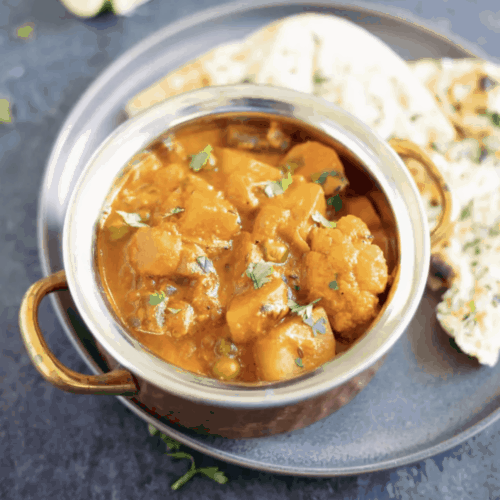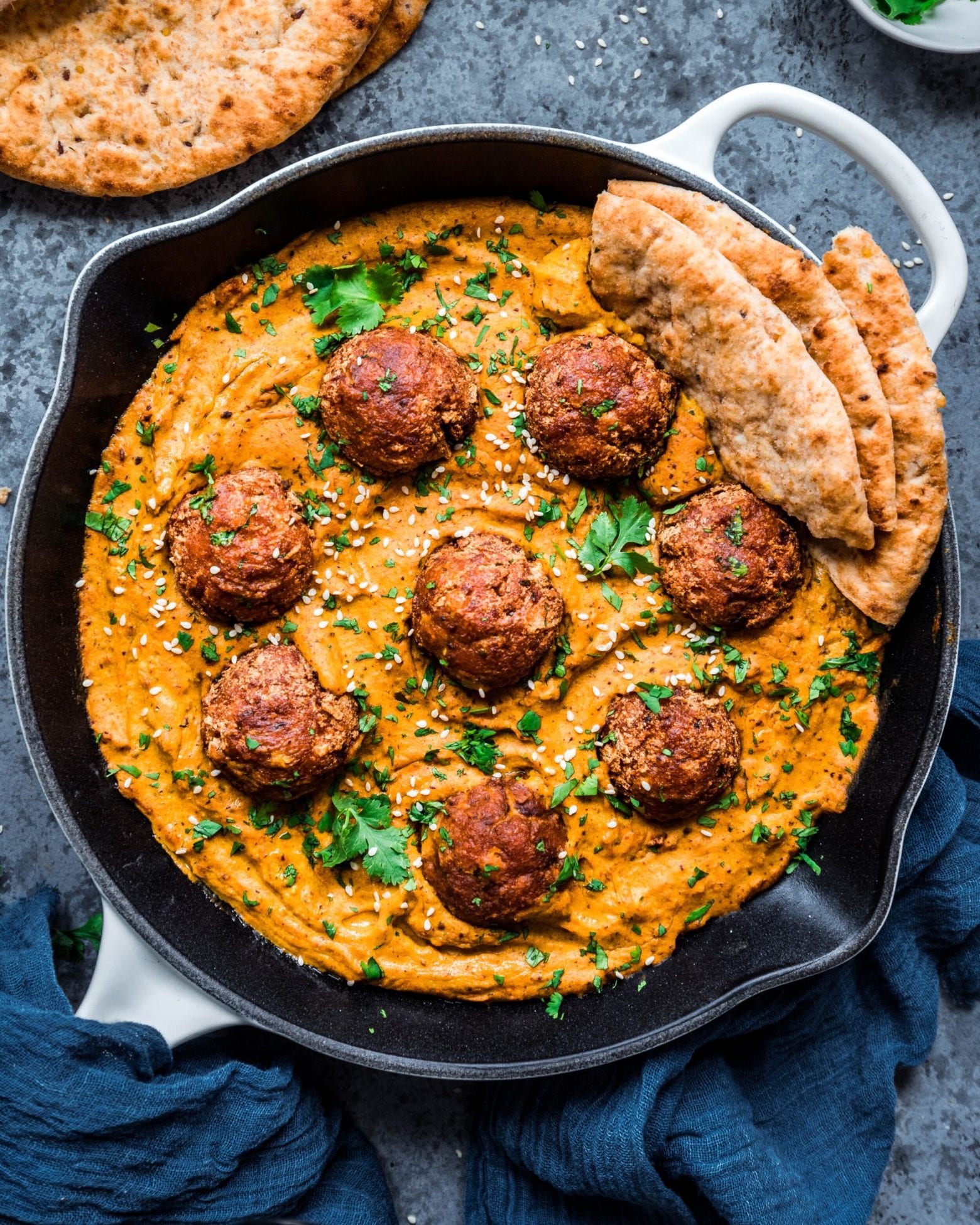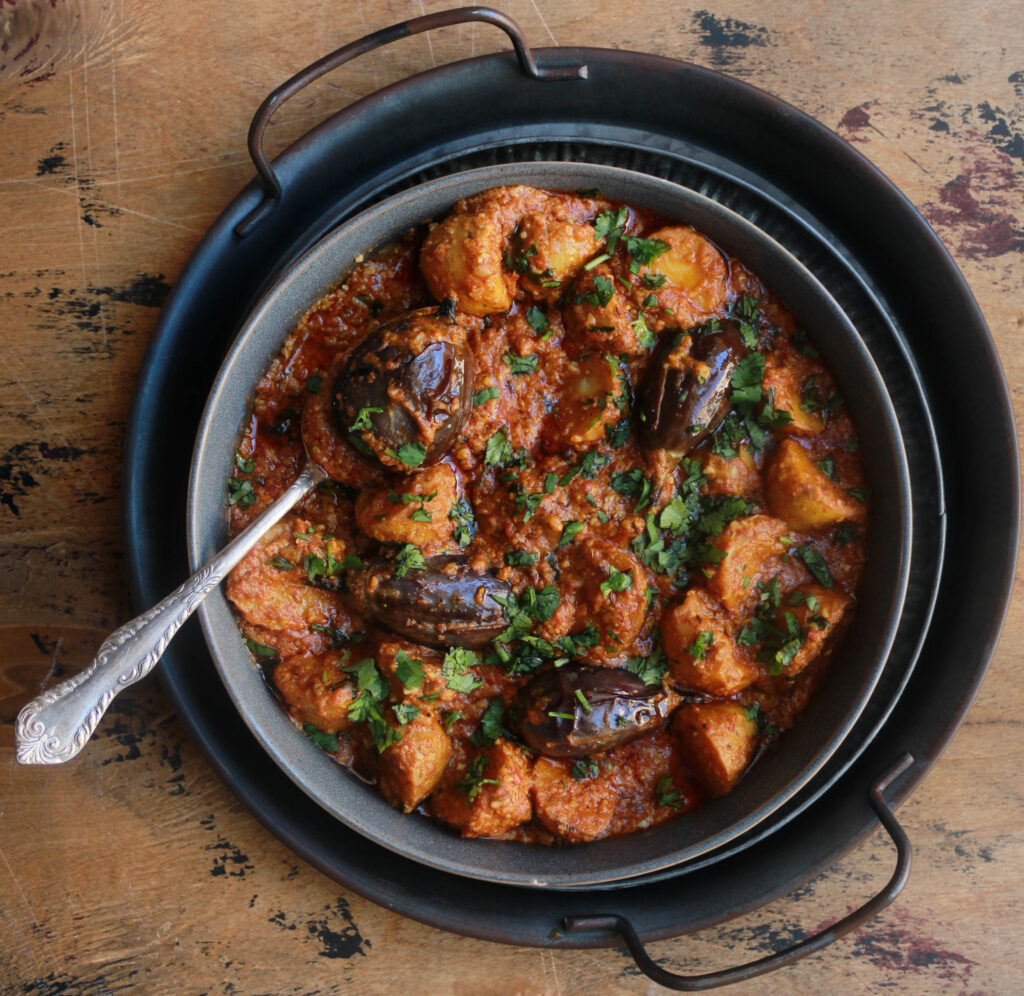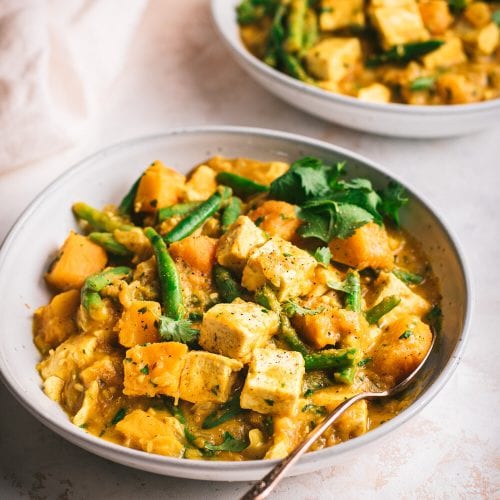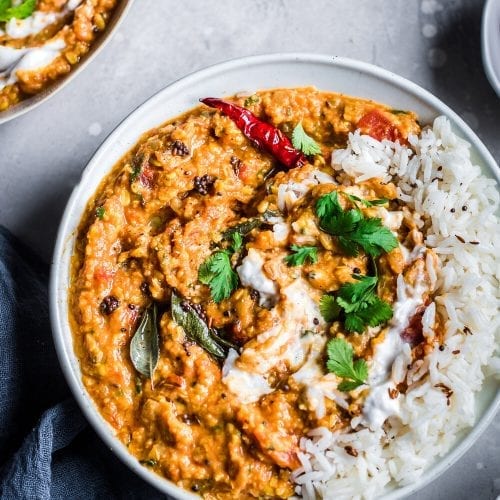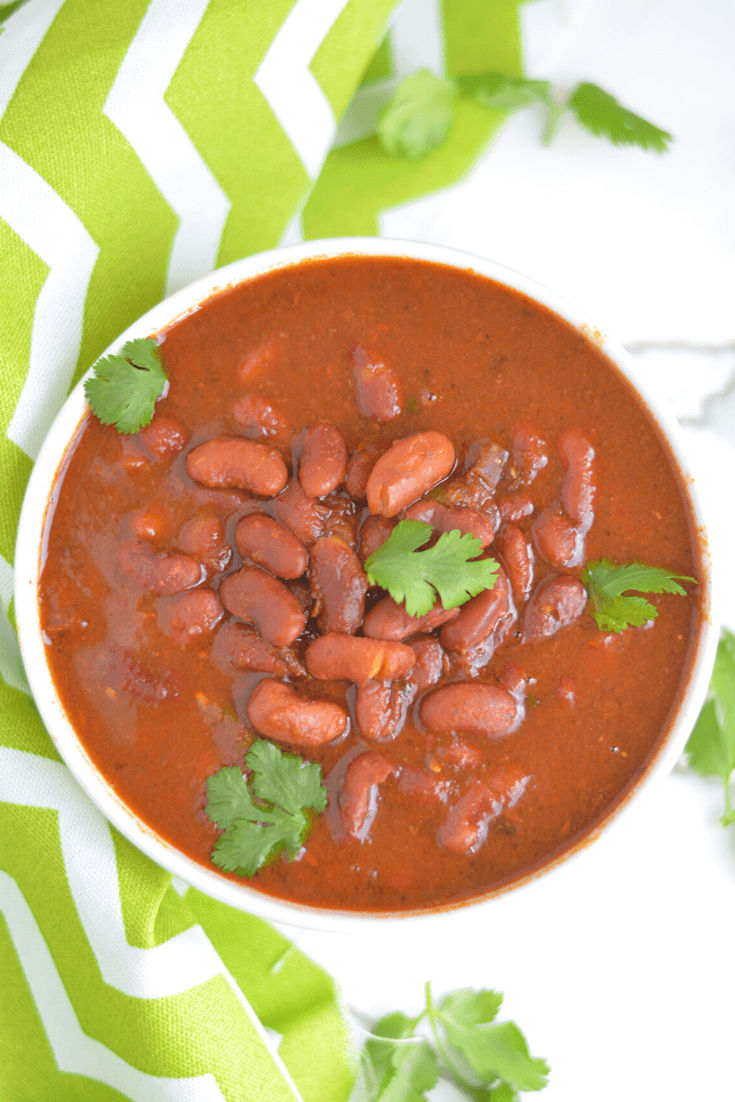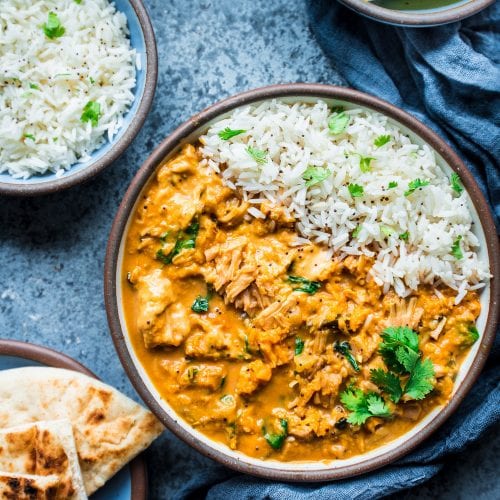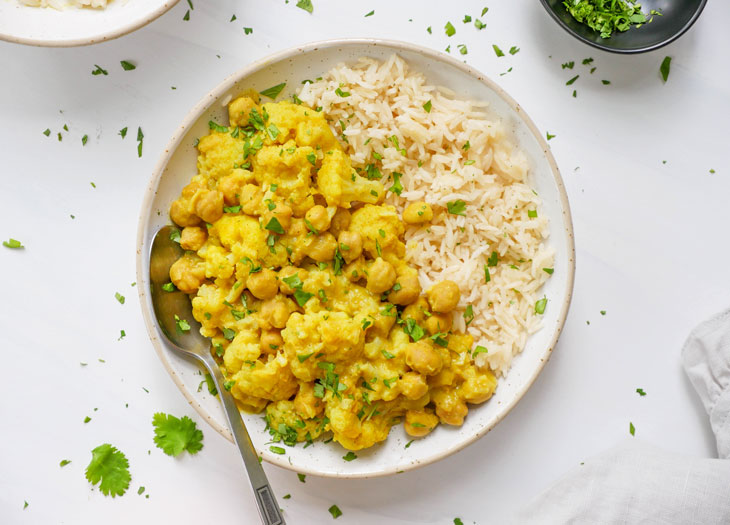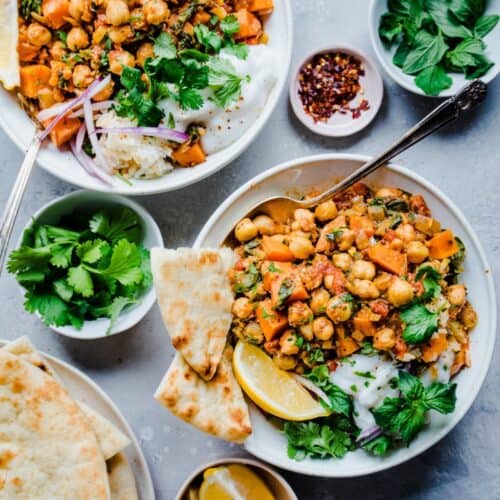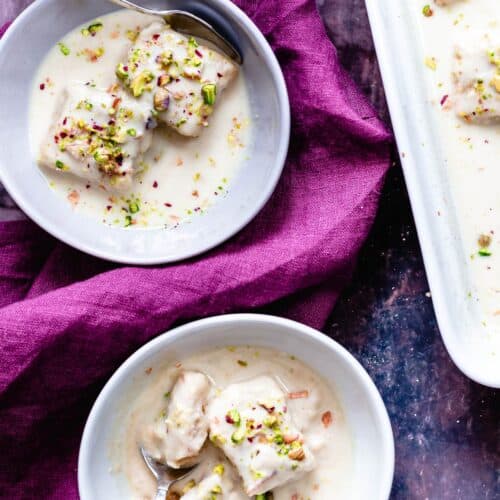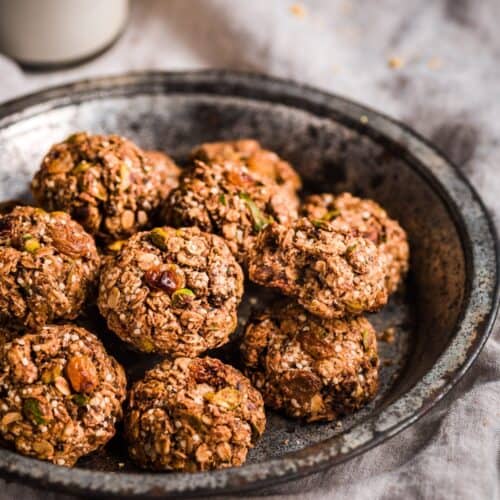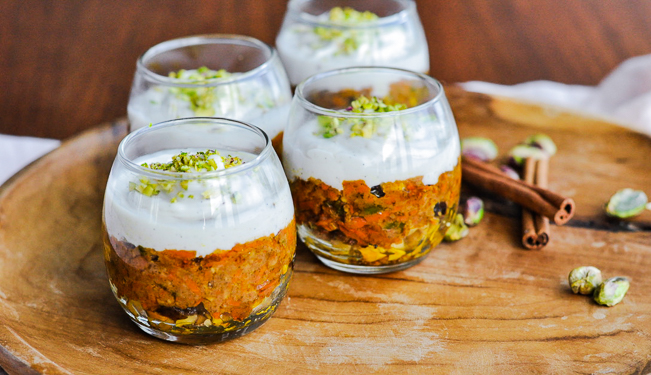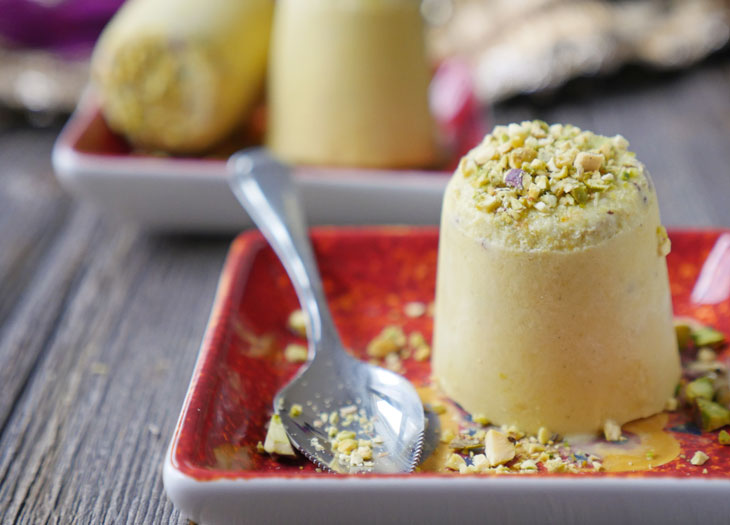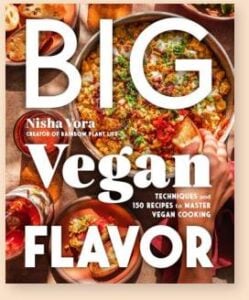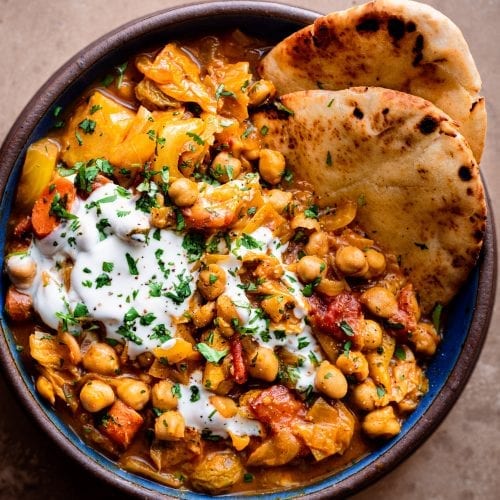Indian food has a reputation for being complicated and difficult, but once you understand some basics, it’s actually pretty straightforward. Sure, there are some recipes that can take 3 hours (like this vegan dal makhani – so worth it, by the way), but there are many others that be made in under 45 minutes (like my red lentil curry). Below I’ve rounded up over 40 fantastic vegan Indian recipes from yours truly and other fabulous South Asian bloggers, along with a few tips you can use to veganize almost any Indian dish. Table of Contents:1. How to Veganize Indian Recipes2. Condiments3. Soups, Appetizers and Side Dishes4. Bread5. Rice Dishes6. Main Dishes7. Desserts
How to Veganize Indian Recipes
Many Indian recipes are naturally vegetarian, so making veganized versions is often easy. With a few ingredient substitutions, you’ll be on your way to veganizing many of your favorite Indian dishes.
Substitute Ghee with Vegan Butter. Ghee is a type of clarified butter that originated in India (and is used frequently in Indian cuisine). I’ve substituted vegan butter for ghee in many recipes, always with good results. And some Indian home cooks, like my mom, often just use oil instead of ghee, depending on the recipe.
Substitute Meat with Pulses. Pulses are a huge part of Indian cuisine (think lentils, chickpeas, beans, split peas), and are a great substitution for meat in curries, dals, soups, and even appetizers.
Substitute Cow’s Milk Yogurt with Plant-Based Yogurt. Plant-Based Yogurt is widely available these days and is a great substitute in most recipes that call for yogurt. Where yogurt is used as a sauce or condiment (think raita) or just used as an accompaniment to a spicy dish, substituting with a plain, unsweetened plant-based yogurt is super easy.
If the recipe itself requires yogurt (e.g., naan or dhokla), some experimentation might be necessary to see which yogurt works the best. In my experience, a tangy coconut yogurt is usually the best option. My favorite brands include Culina, CocoJune, GT’s CocoYo, Kite Hill Foods, and Coconut Collaborative (available in the UK).
Substitute Cream with Cashews or Coconut Milk. When an Indian dish calls for cream, blended raw cashews (i.e., cashew cream) usually work amazingly well. That’s what I do in my Dal Makhani, Vegan Palak Paneer, and Malai Kofta, all with spectacular results! Blended cashews are commonly used in Indian cooking so it’s a harmonious substitution.
Full-fat coconut milk or cream is often a good substitute for milk or cream because most Indian dishes are boldly flavored enough to mask any taste of coconut.
If a dessert calls for condensed milk, you can try sweetened condensed coconut milk, available at many grocery stores these days.
Substitute Honey with Maple Syrup or Agave. If a dessert uses honey, try agave nectar (it has a somewhat similar thick and viscous texture) or maple syrup.
Condiments
Soups, Appetizers and Side Dishes
Bread
Rice Dishes
If you have my cookbook, be sure to check out the vegetable biryani recipe in Chapter 5!
Main Dishes
For an absolutely delicious and hearty Indian-inspired braised stew, head to the bottom of this post!
Desserts
As promised, here is my one of my favorite Indian-inspired recipes, a braised chickpea stew that combines Indian flavors and French techniques. Hope you enjoy!
Big Vegan Flavor
Techniques and 150 recipes to master vegan cooking.

